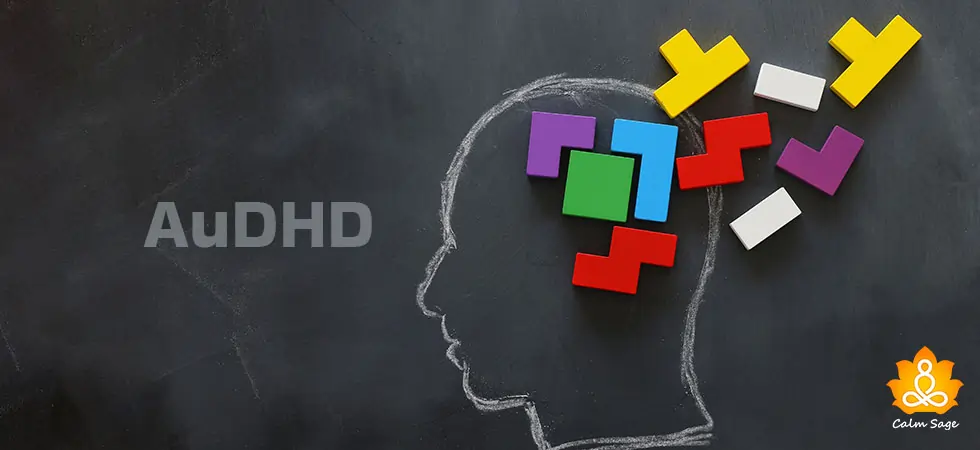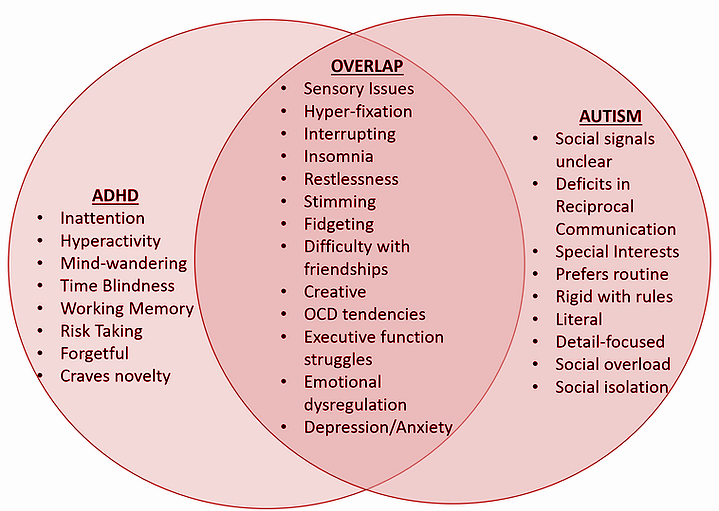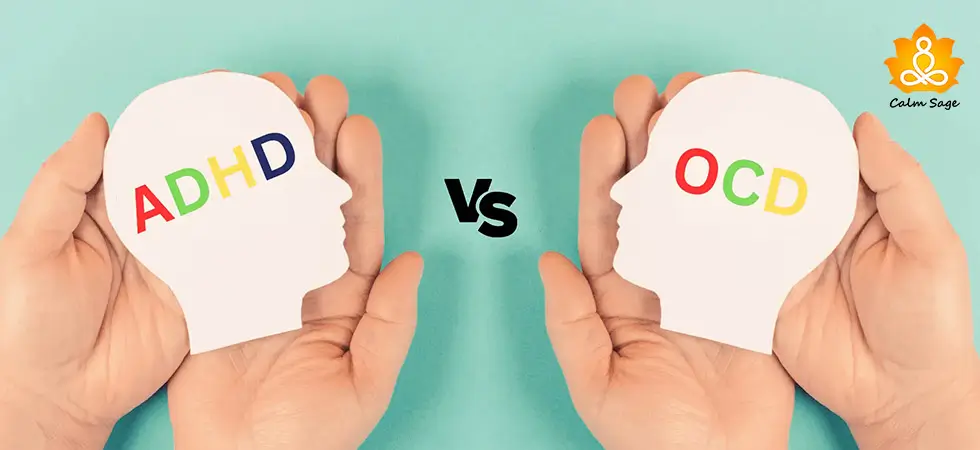AuDHD: An Introduction – Signs and Treatment

Whether you have heard the term AuDHD for the first time or are looking for an answer to whether there is a connection between autism and AuDHD, this article will explain what AuDHD is, its signs, and how it can be treated.
What is AuDHD?
Although not an official diagnosis, the term is gaining popularity as it tells about those who struggle with autism and ADHD. It is a self-diagnosis.
People with ADHD cannot pay attention to things and they experience this when encountered with all stimuli simultaneously. This confuses the individual making it practically impossible for them to pay attention to even one stimulus.
However, in some cases when people with ADHD are hyper-focused, like autistic they are said to have symptoms of both autism and ADHD. This means they may be dealing with AuDHD.
Is AuDHD an official diagnosis?It is not. AuDHD is a conversational way of telling that a person exhibits signs of both autism and ADHD. You will not find any explanation of it in the Diagnostic and Statistical Manual-5 (DSM-5). The symptoms that overlap and make a person struggle with AuDHD are: |
How Autism, ADHD, & AuDHD Connect?
| Autism | ADHD | AuDHD |
|---|---|---|
| They react differently to things socially and emotionally. | Do not pay attention when addressed. | How they behave towards social and emotional situations differs, and their attention is elsewhere during interactions. |
| The reaction to non-verbal communication is different. | – | The reaction to non-verbal communication is different. |
| Hyper Focused | They cannot pay attention to a specific thing. They struggle with hyper-attention. | Are hyper-focused and hyper-attentive. |
| Are unable to develop, maintain, and understand the relationship. There are differences. | – | For them, developing, sustaining, and understanding relationships takes work. There are differences. |
| Behavioral patterns are repetitive. | Are not interested in performing tasks that require mental effort. | They have a special interest in soothing but always feel the need to switch between interests |
| Have a routine and are consistent individuals. | Are impulsive and always look for something unique. | They find comfort in following a routine, as it provides direction, but they also feel the need to change it at any point. |
| Careful planners. | They are not great organizers. | They feel the drive to organize and plan but have difficulty performing it as they get overwhelmed. |
| Pay attention to even small details. | They are unable to pay attention to detail and hence make careless mistakes. | Pay attention to detail, and still make mistakes. |
| Sensory sensitivities | They have sensory sensitivities and still need stimulation. | The sensory sensitivities are severe (often including light sensitivity) yet need stimulation. |
| Face challenges in performing daily tasks. | Forget performing daily activities and lose things essential for performing tasks/activities. | Face challenges when performing daily tasks and even forget to perform them. |
| – | Face difficulty in following instructions to perform a task. | They are unable to follow through with activities and instructions. |
| Analytical & precise | Lateral thinkers and associative thoughts generate many ideas | Analytical, precise & lateral thinker, associative thoughts, have great ideas. |
What It’s Like Having AuDHD?
Living with AuDHD is like living in a world of noise, where the volume is always high, and there is no manual to turn it off. A person with AuDHD feels an overload of sensory processing. There is social anxiety in the attention. They are hyper-focused and disorganized, and their emotions are not regulated. They face challenges while communicating, procrastinate, are impulsive, and show repetitive behaviors.
Symptoms of AuDHD
To live a life with AuDHD, understanding the overlapping symptoms of autism and ADHD is important. Once a person understands the distinctive set of challenges, it becomes easy to deal with the symptoms and traits of AuDHD.
Autistic individuals are mostly inclined to the daily routine, consistency, predictability, and long-lasting interest. In contrast, people with ADHD often look for an environment that offers stimulation, variety, and chances for creativity. AuDHD combines both; hence, the individual struggling with it needs routine and variety.
- Impulsiveness
- Learning differences
- Difficulty in adjusting to social situations
- Lack of attention
- Inability to regulate emotions
- Sensory challenges
Treatment Approaches
The way an adult with AuDHD can be treated is challenging because it is a combination of both autism and ADHD. However, specific strategies can be effective in managing the systems and helping navigate through daily functioning.
1. Behavioral Therapy
This includes cognitive behavior therapy, commonly known as CBT. It helps manage symptoms of ADHD and autism. CBT focuses on changing negative thoughts and behavior patterns, helping individuals with AuDHD target specific behavior thought patterns.
Once an individual learns to address particular issues, it becomes easy to adjust in day-to-day life. CBT can be given to an individual or in a group setting, and it helps to meet the unique needs of an individual with AuDHD.
2. Social skills training
This training helps individuals learn social skills, how to communicate and behave appropriately in social environments when imparted with social straight skill training, and individuals are provided opportunities to practice social interaction in a safe and supportive environment, which helps them understand how to behave in society.
3. Occupational therapy
This therapy helps the individual with AuDHD learn skills to manage sensory issues like hypersensitivity or hyposensitivity. It helps individuals develop strategies and manage their daily tasks without getting overwhelmed.
Embrace the difference
The intertwining of autism spectrum disorder and attention deficit disorder gives rise to a unique challenge known as AuDHD. Although its diagnosis is not as simple as autism and ADHD still, with the proper diagnosis, identifying an individual with AuDHD becomes easy.
When there is an accurate diagnosis, a treatment plan can be easily created, appropriate therapies can be given, and individuals can be empowered to navigate life challenges with support and therapies.





















